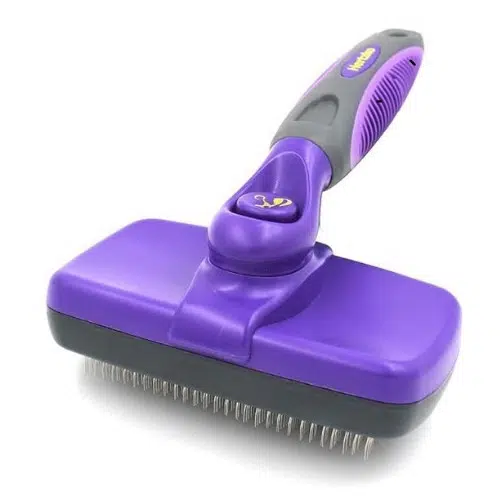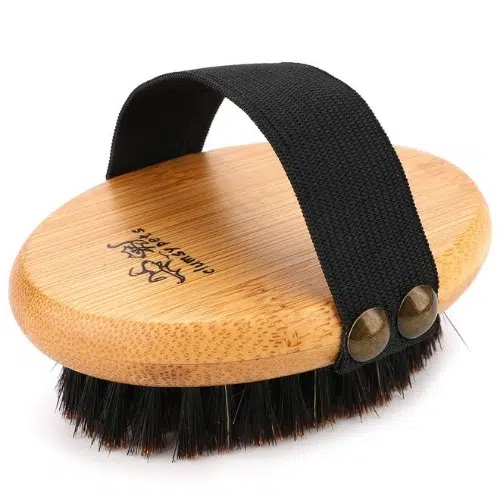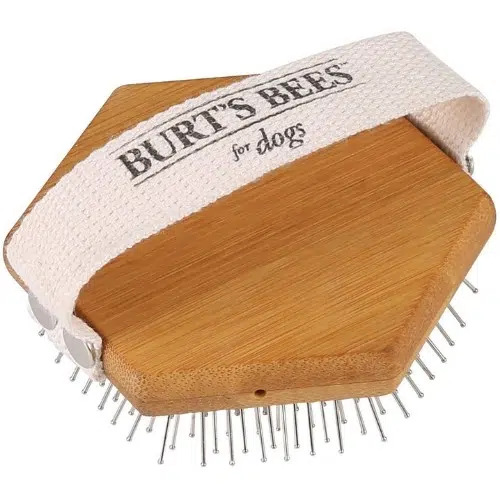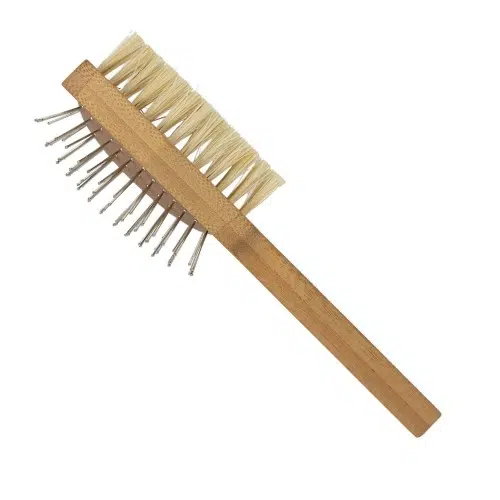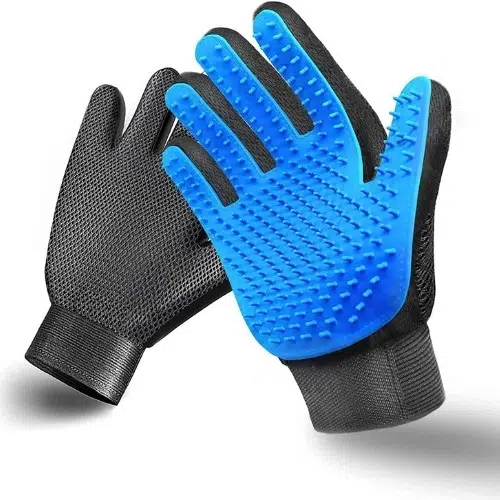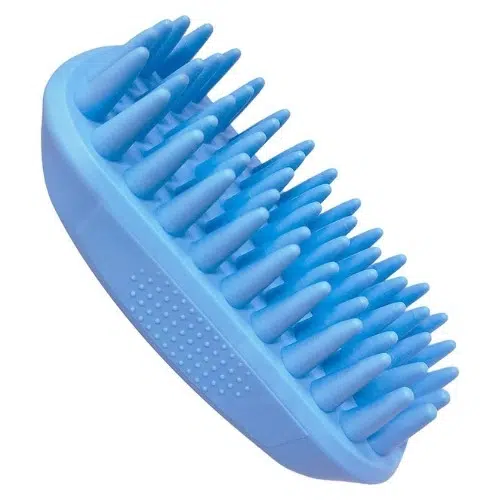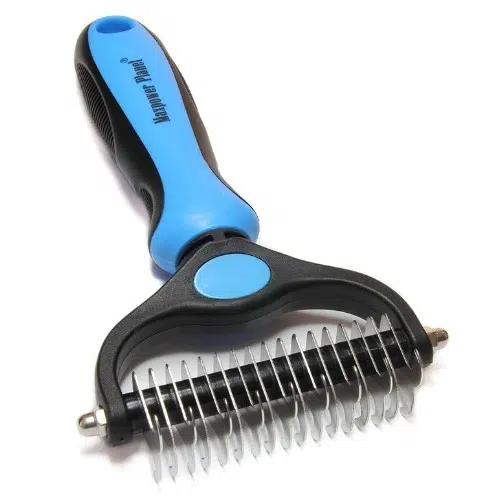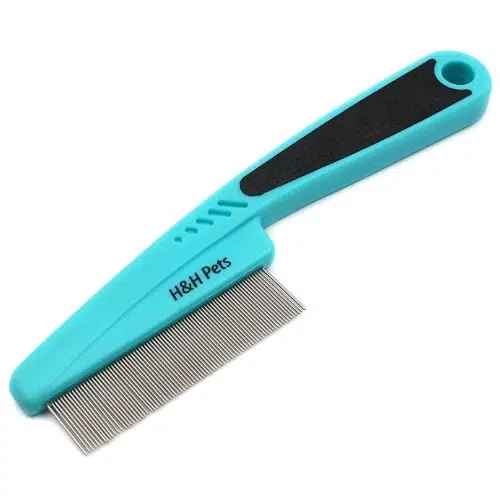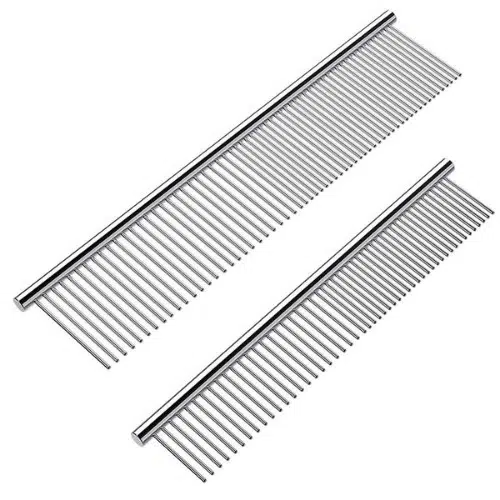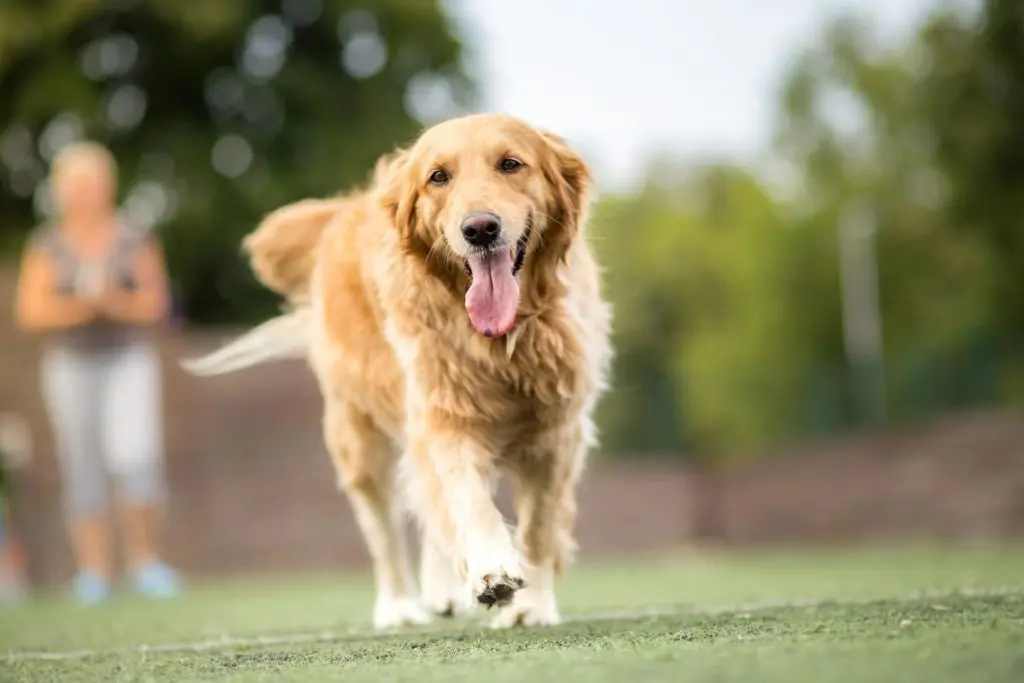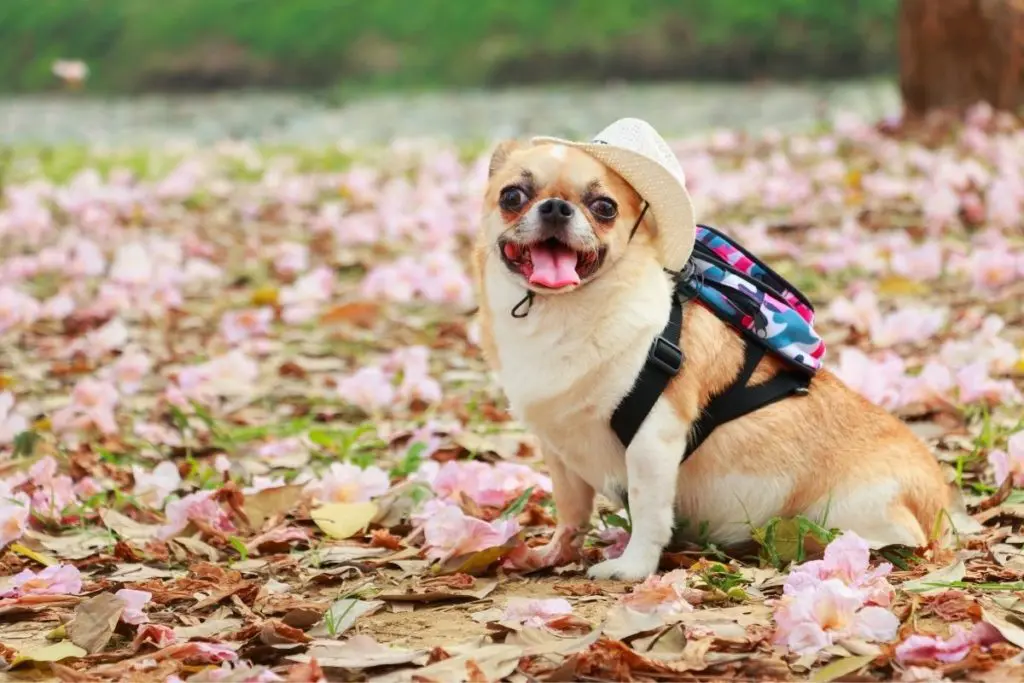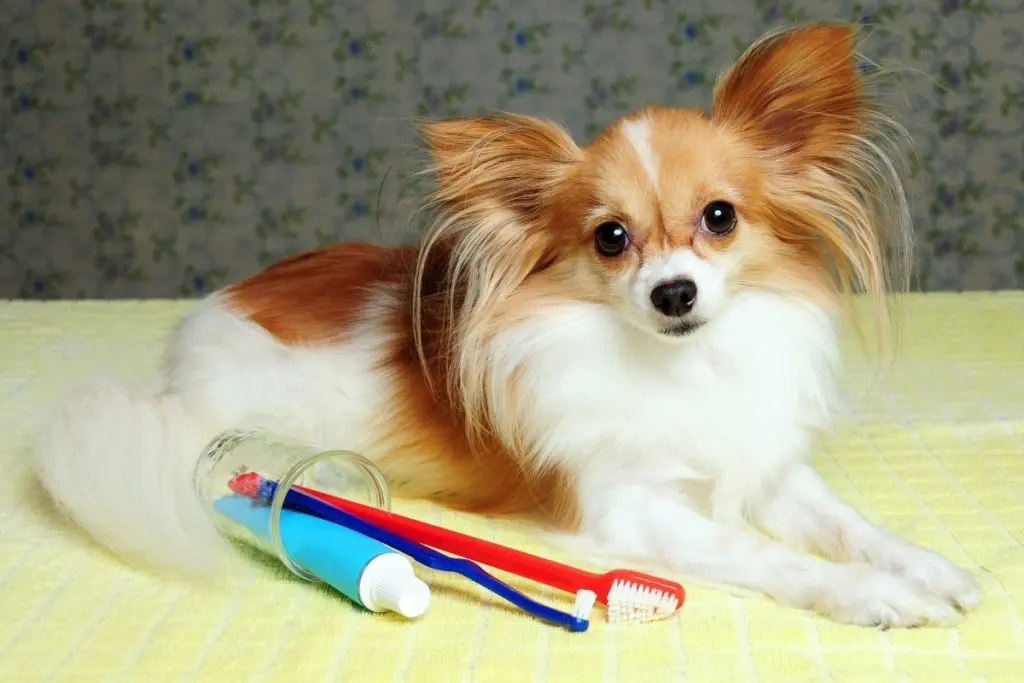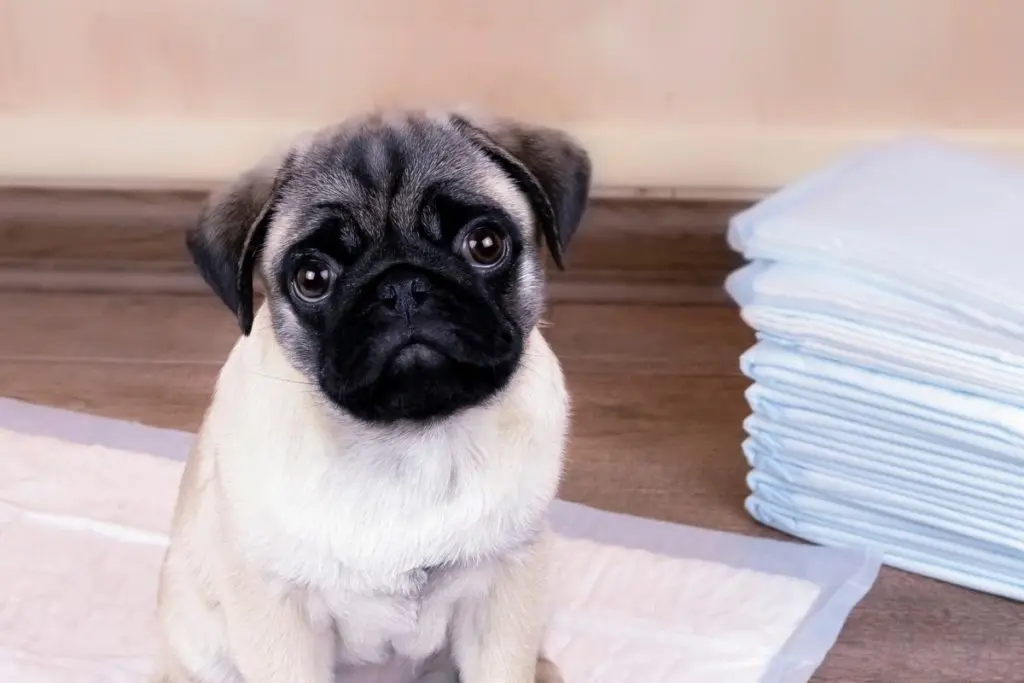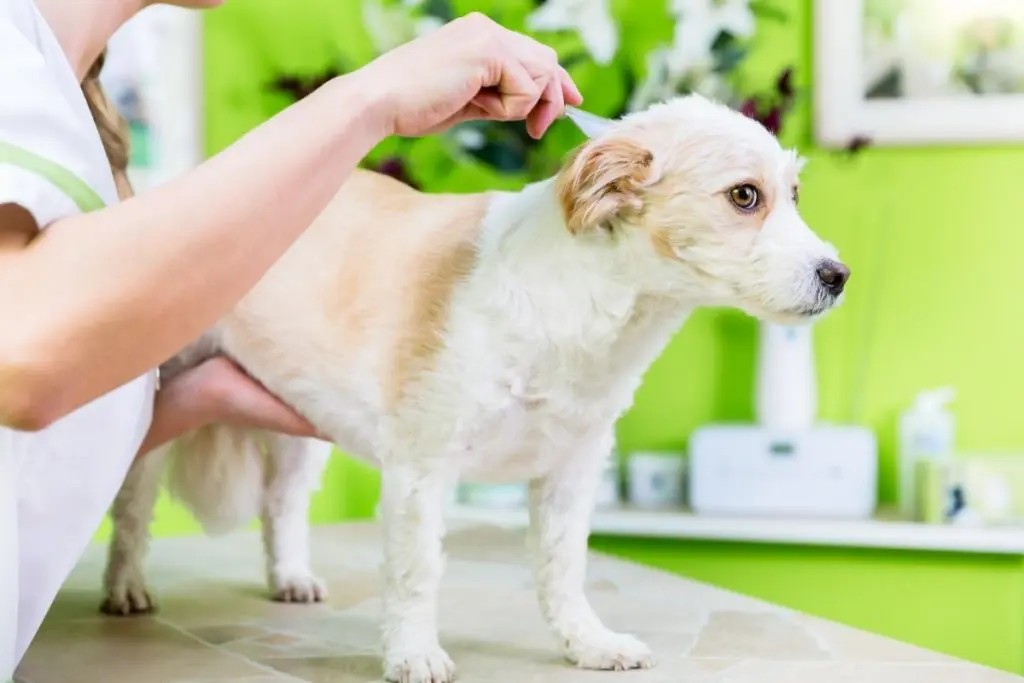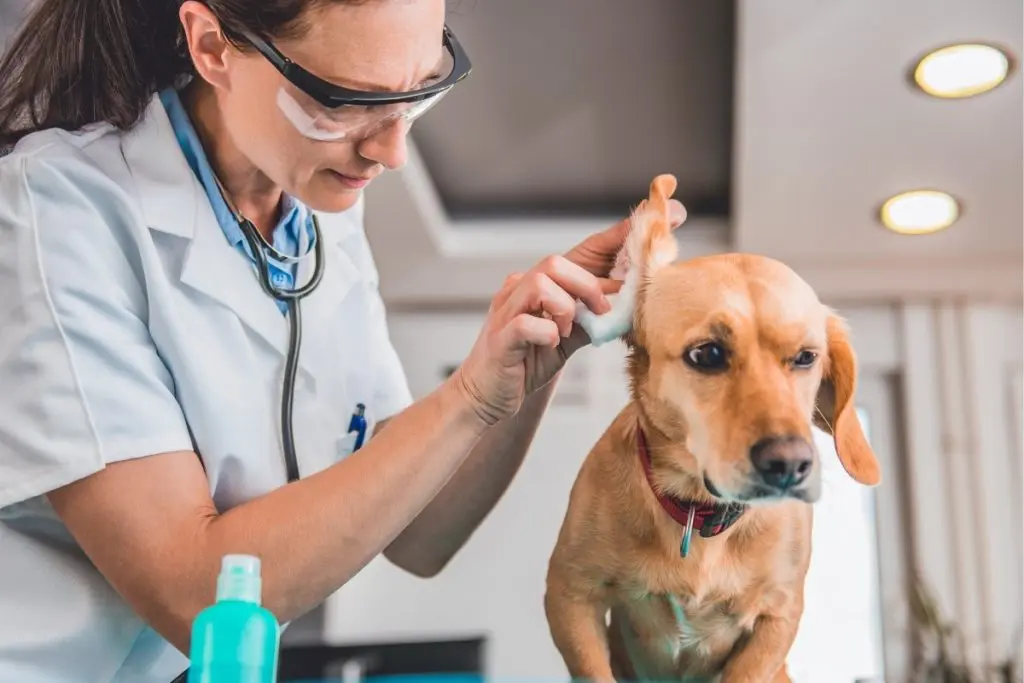There are over 100 dog breeds out there, each with coats of their own unique texture and thickness. They all require grooming, however, the process varies for different types of fur. Not all dog brushes work the same for all dogs. Some dogs require more grooming than others, but all dogs should get some amount of brushing on a regular basis. To parse out what kinds of dog brushes are the best for certain types of dog hair, we’ve compiled this list of the different types of dog brushes. Short hair, long hair, curly hair – every style of dog hair needs brushing. Keep reading for everything you need to know about dog hair brushes.
Different Types of Dog Brushes and How To Use Them
How do you properly brush your dog? Depending on your dog’s fur and their tolerance for being brushed, this might look slightly different. The general rule of thumb is to brush down and out. Start at the dog’s head and work your way down to the tip of their tail. If you run into mats, don’t force the brush through them. Instead, apply a dog-friendly conditioner or detangling spray and gently work out the knot. Make sure you are being as gentle as possible throughout the entire process.
If you start brushing your dog from when they’re a puppy, they are far more likely to tolerate it as an adult. Most dogs enjoy the feeling of getting brushed. It’s important that you have the right brush for their fur. These are different types of dog brushes to consider.
1
Slicker Dog Brush
Slicker dog brushes are one of the most popular among dog owners. These brushes have short, metal, and fine bristles that help smooth out a dog’s fur after it’s been run through with a pin brush. Use them to work out mats in dogs with longer hair, but be careful with how much pressure is being applied to the brush. The metal bristles on slicker dog brushes tend to be sharper than the average dog brush and can hurt a dog’s skin if pushed on too hard. Avoid using a slicker brush on dense or curly hair.
2
Bristle Brush
Bristle dog brushes are best for dogs with wirey and short hair. They are soft to the touch and remove excess hair without irritating the dog’s skin. These brushes have short and thin bristles on the flat base. This means they don’t get as deep into a dog’s coat as other brushes, however, this is exactly what makes them perfect for dog’s with short hair.
3
Dog Pin Brush
Dog pin brushes look very similar to human hairbrushes. They have small pins with balls on the top that run through the dog’s fur. Pin brushes are the most common type of dog brush, but aren’t always the most useful. They don’t do as well at capturing excess hair like rubber or bristle dog brushes. For most dogs, they do a fine job at collecting hair, but the benefits don’t go beyond that.
4
Double Sided Brush
These styles of dog brushes are better for dogs who have a two-step process for brushing out their fur. On one side of the brush is a pin brush with metal prongs that effectively comb through matted hair. It works to both detangle a dog’s coat and smooth out the undercoat. The other side has a bristle comb. This brush will rid the coat of dandruff, loose hair made from the pin brush, and dust, giving the dog a shining coat. It’s perfect for both short and long haired dogs.
5
Dog Brush Glove
Some dogs are less enthused about being brushed by a bristle dog brush. The bristles might scare them if they haven’t been acclimated to dog brushes from a young age. Dog brush gloves are an easy way to accommodate these dogs. This style of brush is exactly what it sounds like – a glove that you wear on your hand. It has rubber knobs on the palm side that you use to remove a dog’s excess hair. From the dog’s perspective, this is just like their owner petting them. Dog brush gloves work best on dogs with short hair. They won’t be as effective at removing shed hair on long-haired dogs.
6
Rubber/Silicone Brush
Similar to dog brush gloves, rubber dog brushes are perfect for dogs with more sensitive skin. They don’t have the same pointed ends that bristle brushes dogs, but are still effective at removing shedding hair. They’re particularly useful for short-haired dogs that shed a lot. If dogs like how the rubber brush feels while they’re dry, they might also like it to be used during a bath. These brushes can be used as a scrubbing brush during a dog bath. They’re effective at thoroughly massaging soap through a dog’s fur while giving them a relaxing massage.
7
Dog Undercoat Brush
Grooming a dog’s undercoat looks slightly different from brushing their top coat. Instead of simply removing extra hair, these brushes are designed to reach down to the dog’s undercoat and work through it. These brushes are really only needed for types of dogs that have thick undercoats for winter like huskies, Alaskan malamut, border collies, and other dogs that were traditionally bred for colder climates. For these breeds, the undercoat is just as important as the outer layer of hair. If it is not properly maintained, it will cause mats to form that must be cut out. Most undercoat brushes look like small rakes. Move them slowly through the dog’s fur until their entire coat looks smooth and shiny.
8
Flea Brush or Comb
Flea combs should be a staple in your dog grooming care kit. Fleas cause itching, irritation, and are generally bad for dog’s skin. Depending on the breed, this can also lead to skin infections that are uncomfortable for the dog. There is only one type of flea comb for all kinds of dogs and it’s an important part of their fur cleanliness regimen.
9
Stripping Comb
Some dogs with wire coats need a lot less grooming, however, their undercoat will shed and sometimes get stuck on the wire coat that sheds less frequently. For that sort of grooming, we recommend stripping with a wide toothed comb. There are a lot of different sizes out there, so make sure you take a look at breed standards for grooming before buying.
Short Hair Dog Brush vs. Long Hair Dog Brush
Dogs with short hair shed more than you might think. The best way to prevent hair from settling all over your couch and carpets is to regularly brush your short-haired dog. Beagles, Labradors, Basset Hounds, Terriers, and more are all breeds that require brushes for short-haired dogs.
You want to make sure you’re using a brush with short and soft bristles. A rubber dog brush is an excellent option here. Some dog parents enjoy using slicker dog brushes because they are excellent at de-shedding, but these styles of brushes might tickle the dog. Gently brush in the same direction that the hair is growing to make sure the dog is comfortable.
Brushing a dog with long hair is a different process than brushing a dog with short hair. Think breeds like Border Collies, Irish Setters, Golden Retrievers, Maltese, and other dogs with long hair.
Firstly, there is more hair to work through. The likelihood of running into mats is higher. You might want to have a dog-friendly conditioner handy to work out those knots when they appear. Bristle dog brushes with medium-length bristles are the best to use here. They can work through all the layers of dog hair for a thorough brush without hurting the dog’s skin. The Furminator dog brush is a favorite among pet owners. It comes in several different designs, ranging from bristle to slicker, and collects shed hair better than most others.
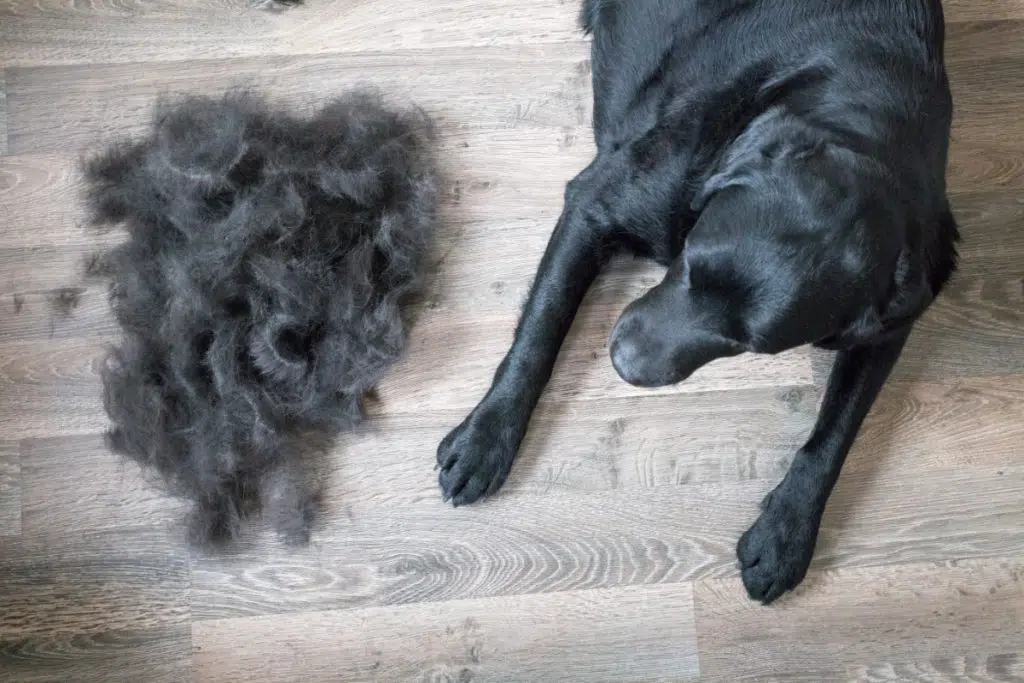
Dog Brush FAQ
Why Should You Brush Your Dog?
Keeping a dog’s coat clean is an important part of their overall health. Regular brushing removes dead skin and loose hair. It also evenly distributes natural oils through their entire coat for a healthy shine.
How Often Should You Brush Your Dog?
You should brush your dog every couple of days regardless of hair length. It takes very little time for a dog’s hair to become matted. During the warmer months, you might want to brush your dog everyday to prevent their loose hair from accumulating all over your home. Along with this, many dog owners schedule regular appointments with their local groomer for a professional grooming session.
How Often Should You Brush Your Dog?
Make sure your dog is acquainted with the specific brush you plan to use. Set it down in front of their nose and let them smell it. This ensures your dog is comfortable with the brush before being touched by it. Do this until your dog is comfortable with being touched by the brush.
Just like humans, dogs have a huge variety of coat types. Each of these types of fur require different brushes and processes to keep their coats looking shiny and smooth. It’s equally important to train a dog to trust and enjoy being brushed from a young age. This will make grooming a breeze through the dog’s entire adult life.
How Do You Brush A Scared Dog?
A dog might be afraid of getting brushed. This is likely due to either the brush being an unfamiliar item or a bad experience with grooming in the past. However, this doesn’t mean it’s impossible to train a dog to be brushed.
First, make sure the dog has a chance to smell the brush while it is sitting unmoving on the ground. Next, alternate petting and brushing the dog. This will help the dog associate affection with brushing. Use these steps and be patient. Make sure you’re brushing lightly and using the proper brush for the dog’s coat type. Over time, the dog will hopefully begin to trust, and possibly even enjoy, getting brushed.
Further Reading

